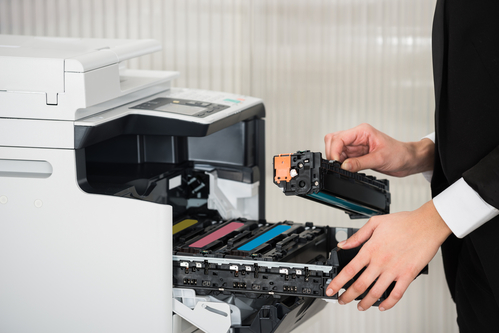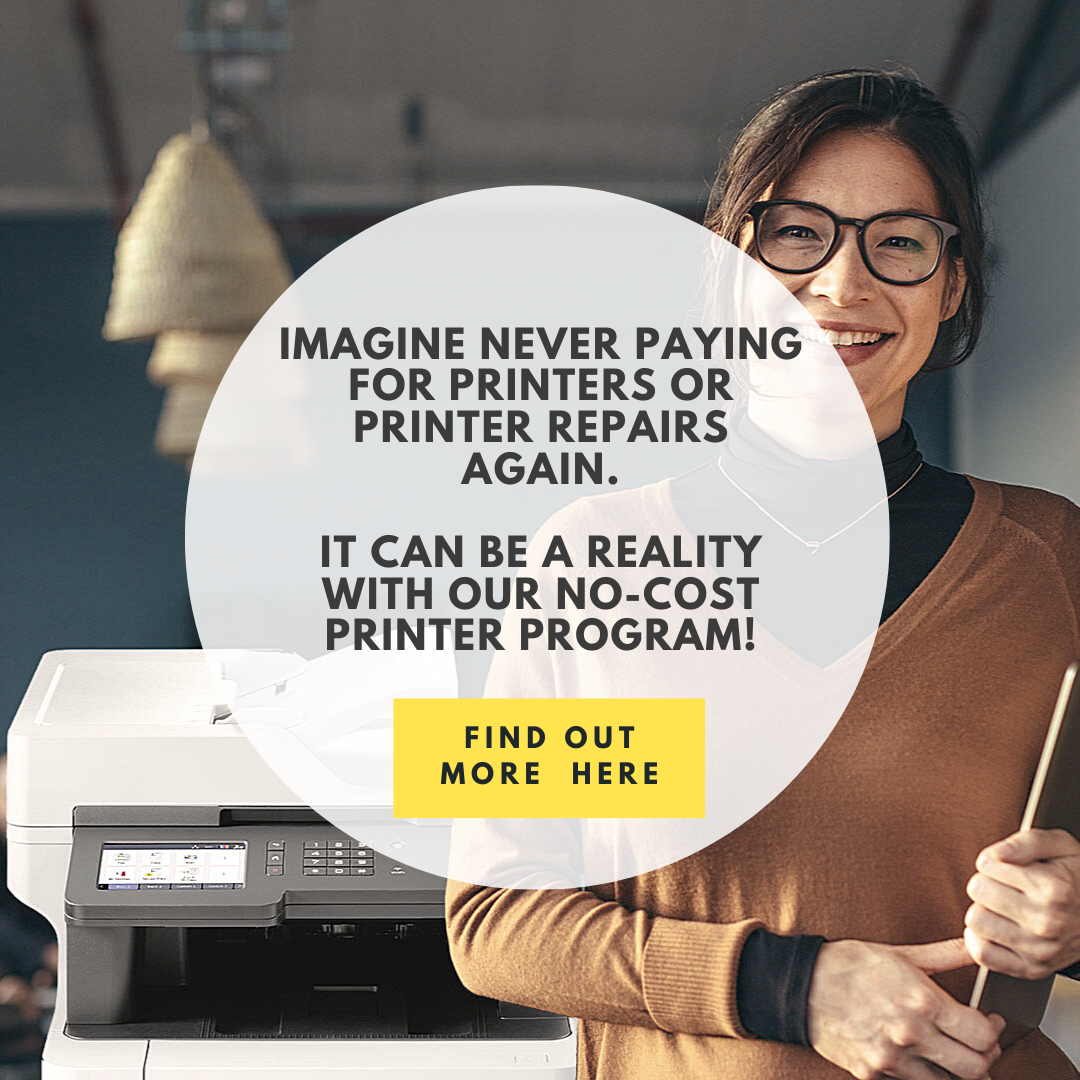The same way your car’s gas mileage fluctuates when you go up a hill or pull a trailer, so too does your actual toner yield when you put more toner on a page. Every time you add a logo, chart or some other graphic, the more you pay per page.
Would you be able to guess what percentage of page coverage is used to calculate the published page yield of a print cartridge – the answer is a mere 5%! Wondering what 5% toner coverage looks like? Imagine taking a black marker and coloring in the corner of a letter-size piece of paper representing what you believe to be just 5% of the total area. It isn’t much is it?
As you would expect, printer manufacturers rate their cartridge yields based on testing conditions that are favorable to the absolute maximum number of pages from a printer cartridge. Most cartridge yields you see are based on three cartridges running continuously through a printer, only stopping to reload paper when needed. This eliminates the waste associated with a printer cooling down and starting up again. And if you dig deep into the ISO rule book, a governing body behind third party cartridge yield testing, you’ll also see that each of those three cartridges tested may be removed and shaken two times to get every bit of toner out. Even though these tests tend to produce inflated yields and a lower than “real world” cost per page, most consumers still seem to calculate their cost per page from page yields they see on a website. This is no different than believing the stilted gas mileage claims we see in the media.
On the low side, most offices tend to print 10 – 15% coverage on black and white documents and 15 – 30% coverage when printing in color. Of course, printing just 10% coverage in black and white will double your costs and color becomes exponentially more expensive because you’re using toner from four different toner cartridges to produce colored text or an image.
Graphic Arts, Retail, Healthcare, Education and Financial organizations tend to have higher than normal toner coverage because their printed documents tend to include more visual information.
Common Causes of Higher Cost Per Page:
- Charts
- Photographs
- Graphics
- Logos
- Email Signatures
- Shading
If you’re wondering what your actual toner coverage is, our new print assessment & print savings calculator makes it easy to calculate the actual toner coverage of the documents printed in your office. When we show customers the fact-based data from our complimentary print assessment service, most are shocked at what their printers are actually costing them and quickly ask to move from a “variable cost-per-page” to a “fixed cost-per-page” model.
Listed below are immediate financial benefits fixed cost-per-page models provide without asking end-users to change their printing behaviors:
- Cost Savings
- Expense Control
- Budget Predictability
Cartridge World can help your transition to save more on Office Toner. Our reliable & affordable options will help you save on every print you make.
Contact your local Cartridge World to learn how we can help you start saving today!







